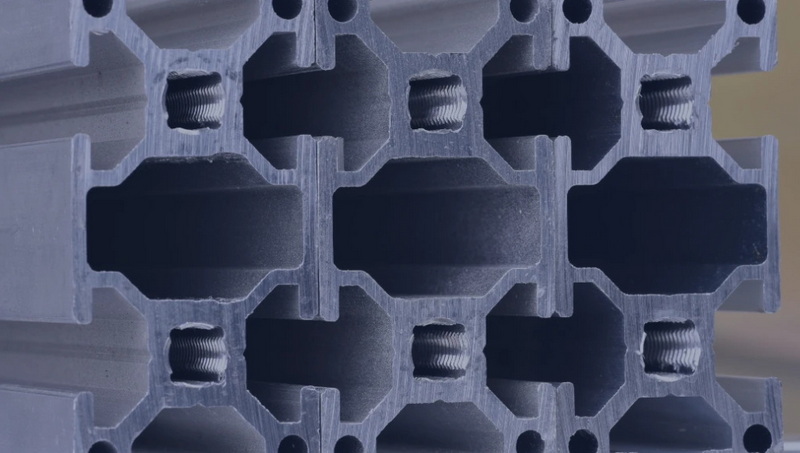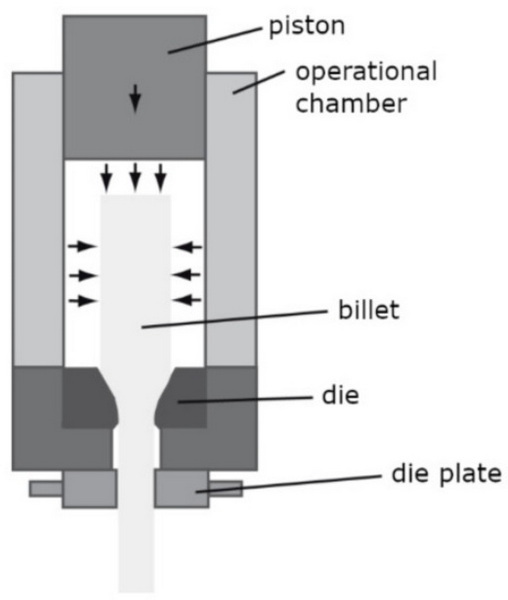Content Menu
● Understanding 7075 Aluminum Alloy
>> Key Properties of 7075 Aluminum
● The Aluminum Extrusion Process
● Advantages of 7075 Aluminum Extrusion
● Applications of 7075 Aluminum Extrusions
● Shear Assisted Processing and Extrusion (ShAPE)
● The Role of 7075 Aluminum in Electric Vehicles (EVs)
● Overcoming Challenges with 7075 Aluminum Extrusion
● The Future of Aluminum Extrusion
● Comparative Analysis with Other Alloys
● Cost-Effectiveness of 7075 Aluminum
● Applications Across Industries
● Conclusion
● FAQ
>> 1. What is the primary advantage of using 7075 aluminum?
>> 2. How does the extrusion process affect the properties of aluminum?
>> 3. Is 7075 aluminum resistant to corrosion?
>> 4. Can 7075 aluminum be welded?
>> 5. In which industries is 7075 aluminum commonly used?
● Citations:
Aluminum is one of the most widely used materials in various industries due to its lightweight, corrosion resistance, and excellent mechanical properties. Among the various aluminum alloys, "7075 aluminum" stands out for its remarkable strength and durability. This article delves into how "7075 aluminum extrusion" enhances product durability, examining its properties, applications, and advantages over other materials.

Understanding 7075 Aluminum Alloy
7075 aluminum is a high-strength alloy primarily composed of zinc, with smaller amounts of magnesium, copper, and other elements. Its unique composition gives it exceptional mechanical properties, making it suitable for applications that require high strength and resistance to stress.
Key Properties of 7075 Aluminum
- High Strength-to-Weight Ratio: 7075 aluminum offers a strength-to-weight ratio that is significantly higher than many other aluminum alloys and even some steels[2]. This makes it ideal for applications where weight savings are critical without compromising strength.
- Tensile Strength: The tensile strength of 7075-T6 aluminum can reach up to 83,000 psi (approximately 572 MPa), making it one of the strongest aluminum alloys available[5].
- Fatigue Resistance: It exhibits excellent fatigue resistance, allowing it to withstand cyclic loads without failure[5].
- Corrosion Resistance: While not as corrosion-resistant as some other alloys, 7075 can be treated (e.g., anodized) to improve its resistance to corrosion[2].
The Aluminum Extrusion Process
Aluminum extrusion is a manufacturing process that transforms aluminum alloy into desired shapes by forcing it through a die. The process involves several steps:
1. Preparation of the Die: The extrusion die is preheated to ensure optimal metal flow.
2. Preheating the Aluminum Billet: The billet is heated to make it malleable enough for extrusion.
3. Extrusion: The heated billet is pushed through the die under high pressure to form the desired shape.
4. Cooling and Cutting: The extruded material is cooled and cut into specified lengths.
Advantages of 7075 Aluminum Extrusion
The extrusion process enhances the properties of 7075 aluminum in several ways:
- Uniformity in Structure: Extrusion results in a more uniform grain structure compared to other forming processes. This uniformity contributes to improved mechanical properties and durability.
- Enhanced Strength: The extrusion process aligns the grain structure along the direction of flow, significantly enhancing the strength of the extruded product.
- Versatile Shapes: The ability to create complex shapes allows for innovative designs that can improve product performance and reduce weight[2].
Applications of 7075 Aluminum Extrusions
Due to its superior properties, 7075 aluminum extrusions are used in various demanding applications:
- Aerospace Components: Used in aircraft structures where lightweight and high strength are critical[2]. It is also used in aircraft fittings and fasteners[2].
- Automotive Parts: Ideal for high-performance vehicles that require durable yet lightweight components[2]. It is employed in chassis components, suspension systems, and engine components[2].
- Sporting Equipment: Commonly found in bicycles, climbing gear, and other equipment where strength and weight are crucial factors.
- Marine Industry: Used for constructing boat hulls, masts, and other structural components[2].
- Construction Industry: Used in scaffolding, window frames, and other architectural elements[2].
Shear Assisted Processing and Extrusion (ShAPE)
Conventional extrusion of 7075 aluminum is limited by its slow speed, typically around 2 meters per minute[3][6]. This limitation is due to factors like surface tearing and cracking caused by the melting of low melting point (LMP) phases, abnormal grain growth, and material flow issues[6]. To combat these issues, a novel method called Shear Assisted Processing and Extrusion (ShAPE) has been developed[3][6].
ShAPE offers several advantages over conventional extrusion:
- Increased Extrusion Speed: ShAPE can achieve extrusion speeds up to 12.2 meters per minute, significantly faster than conventional methods[3][6].
- Reduced Thermal Treatments: ShAPE eliminates the need for billet homogenization and pre-heating, and can also eliminate post-extrusion solution heat treatment[3].
- Improved Mechanical Properties: 7075 aluminum extruded using ShAPE exhibits excellent yield strength, ultimate tensile strength, and elongation[3].
The increased speed achieved by ShAPE is attributed to more extensive shear deformation, which results in a high density of low angle grain boundaries that facilitate continued deformation and delay the onset of surface tearing[6].

The Role of 7075 Aluminum in Electric Vehicles (EVs)
The electric vehicle (EV) market is expected to drive growth in the aluminum extrusion sector, requiring high-performance aluminum alloy extrusions[1]. 7075 aluminum can be used to produce structural components for EVs, such as battery trays[1]. The high strength-to-weight ratio of 7075 aluminum makes it an ideal material for these applications, as it can help reduce the overall weight of the vehicle, improving its energy efficiency and performance[2].
Overcoming Challenges with 7075 Aluminum Extrusion
Despite its advantages, extruding 7075 aluminum presents several challenges:
- Slow Extrusion Speed: As mentioned earlier, 7075 aluminum is difficult to extrude at high speeds due to the risk of surface tearing and cracking[6]. ShAPE is one method to address this[3][6].
- High Cost: The manufacturing processes for 7075 aluminum extrusions can be more expensive than those for other alloys[6].
- Weldability: 7075 aluminum is not easily weldable compared to other alloys like 6061 due to its susceptibility to stress corrosion cracking[6].
To overcome these challenges, researchers and manufacturers are exploring new extrusion methods and post-processing techniques. These advancements aim to improve the extrudability of 7075 aluminum, reduce manufacturing costs, and enhance its weldability and corrosion resistance.
The Future of Aluminum Extrusion
The aluminum extrusion sector is continuously evolving, with new and improved aluminum alloys being developed to meet the demands of various industries[4]. The rise of high-strength aluminum alloys like 7075 and 7050 is revolutionizing the applications of aluminum profiles in demanding sectors such as aerospace, military, and automotive[4].
As industries continue to seek innovative solutions for lightweighting and improving product performance, the use of 7075 aluminum extrusions is likely to expand further. With ongoing research and development efforts, the challenges associated with extruding this high-strength alloy are being addressed, paving the way for its wider adoption in various applications.
Comparative Analysis with Other Alloys
When comparing 7075 aluminum with other popular alloys like 6061, it's evident that 7075 offers superior strength and durability[5]:
| Property | 6061 Aluminum | 7075 Aluminum |
| Tensile Strength | Up to 310 MPa | Up to 572 MPa |
| Yield Strength | Up to 276 MPa | Up to 480 MPa |
| Fatigue Strength | Moderate | High |
| Corrosion Resistance | Good | Moderate |
Cost-Effectiveness of 7075 Aluminum
While 7075 aluminum may be more expensive than some other materials, its durability and performance can lead to cost savings in the long run[2]. The reduced need for maintenance and replacement, along with improved efficiency, can offset the initial investment[2]. Additionally, the long lifespan of products made from 7075 aluminum contributes to its overall cost-effectiveness[2].
Applications Across Industries
Aerospace Industry:
The aerospace industry relies heavily on 7075 aluminum extrusions due to the critical need for lightweight and strong materials in aircraft design and manufacturing[2]. Components such as aircraft frames, wing structures, and landing gear often utilize 7075 aluminum because of its high strength and fatigue resistance[2]. The aerospace sector demands materials that can endure extreme conditions, and 7075 aluminum meets these requirements effectively[2].
Automotive Industry:
In the automotive sector, 7075 aluminum is used in high-performance vehicles, particularly in racing and sports cars[2]. The alloy is employed in parts such as chassis components, suspension systems, and engine components where weight reduction is critical for performance[2]. The automotive industry values 7075 for its ability to withstand high stress while maintaining a lightweight profile[2].
Marine Industry:
In the marine industry, 7075 aluminum is used for constructing boat hulls, masts, and other structural components[2]. The alloy's resistance to corrosion, especially when anodized, makes it suitable for marine environments[2]. Additionally, the lightweight nature of 7075 aluminum helps improve the speed and fuel efficiency of boats[2]. Marine applications often require materials that can withstand harsh saltwater conditions, and 7075 aluminum meets these demands effectively[2]. Its strength allows for the construction of robust vessels that can handle rough seas while maintaining performance[2].
Construction Industry:
The construction industry also benefits from the use of 7075 aluminum extrusions, particularly in applications requiring lightweight structural components[2]. This alloy is used in scaffolding, window frames, and other architectural elements where strength and weight are critical factors[2]. The ability to extrude 7075 aluminum into various shapes allows architects and builders to create innovative designs that are both functional and aesthetically pleasing[2].
Conclusion
In summary, the use of 7075 aluminum extrusion significantly improves product durability due to its exceptional mechanical properties, uniform structure from the extrusion process, and versatility in design[2][5]. The advent of ShAPE technology further enhances its potential by increasing extrusion speeds and reducing thermal treatments[3][6]. Its applications across various industries highlight its importance as a material that combines strength with lightweight characteristics[2]. As technology advances, the potential for further enhancements in processing techniques may lead to even broader applications for this remarkable alloy[4]. The ongoing research and development efforts aimed at addressing the challenges associated with extruding 7075 aluminum promise a future where this high-strength alloy is more widely adopted and utilized across diverse sectors[6].

FAQ
1. What is the primary advantage of using 7075 aluminum?
The primary advantage of using 7075 aluminum is its high strength-to-weight ratio, making it ideal for applications requiring lightweight yet durable materials[2][5].
2. How does the extrusion process affect the properties of aluminum?
The extrusion process enhances the uniformity of the grain structure and aligns it along the flow direction, resulting in improved mechanical properties such as strength and fatigue resistance.
3. Is 7075 aluminum resistant to corrosion?
While 7075 aluminum has moderate corrosion resistance compared to other alloys, it can be treated (e.g., anodized) to enhance its resistance against corrosive environments[2].
4. Can 7075 aluminum be welded?
Welding 7075 aluminum is challenging due to its susceptibility to stress corrosion cracking; however, it can be joined using specific methods like resistance welding[6].
5. In which industries is 7075 aluminum commonly used?
7075 aluminum is commonly used in aerospace, automotive, sporting equipment manufacturing, marine, and construction industries, and any application requiring high-strength materials[2].
Citations:
[1] https://www.pnnl.gov/main/publications/external/technical_reports/PNNL-32387.pdf
[2] https://www.yjing-extrusion.com/what-industries-most-commonly-utilize-7075-aluminum-extrusions.html
[3] https://www.osti.gov/servlets/purl/1843596
[4] https://www.fortune-alu.com/info-detail/trends-shaping-the-future-of-aluminum-extrusion
[5] https://www.wellste.com/6061-vs-7075which-is-better-for-your-aluminum-extrusion-profiles/
[6] https://www.osti.gov/servlets/purl/1829474
[7] https://www.nrel.gov/docs/fy22osti/80038.pdf
[8] https://www.chaluminium.com/common-aluminum-extrusion-defects-causes-and-solutions
[9] https://www.researchgate.net/publication/223842777_Extrusion_of_7075_aluminium_alloy_through_double-pocket_dies_to_manufacture_a_complex_profile
[10] https://hplmachining.com/blog/what-are-the-problems-with-aluminum-extrusion/
[11] https://www.mdpi.com/1996-1944/17/5/1210
[12] https://www.howardprecision.com/benefits-of-7075-aluminum-for-various-industries/
[13] https://www.researchgate.net/publication/348246953_Improving_both_Strength_and_Ductility_of_Al-7075_by_combining_Dual_Equal_Channel_Lateral_Extrusion_with_Aging_Heat_Treatment
[14] https://www.linkedin.com/pulse/7075-aluminum-market-report-in-depth-wb2nf/
[15] https://redstonemanufacturing.com/properties-of-alumunium-7075/
[16] https://www.researchgate.net/publication/257516704_Case_studies_on_virtual_extrusion_of_aluminium_alloys_in_real_size
[17] https://www.zetwerk.com/resources/knowledge-base/aluminum-extrusions/6061-vs-7075-aluminum-the-ultimate-comparison-guide/
[18] https://www.researchgate.net/publication/225607252_Extrusion_tests_of_7075_aluminium_alloy_at_high_solid_fraction
[19] https://profileprecisionextrusions.com/lead-time-for-7075-and-2024-aluminum-alloy-extrusions-is-over-1-year/
[20] https://www.zetwerk.com/aluminum-extrusions/






















